Abstract
1. The gain of the central response mechanism and the latency of the pure central response of on-centre ganglion cells were studied by recording from single optic tract fibres the responses evoked by slow square-wave stimuli applied against some steady background.
2. The concept of effective flux was introduced and defined: if any portion of a stimulus extends beyond Ricco's area of complete summation, then that stimulus has an actual flux, equal to the product of its area and luminance, but it also has an effective flux which is that fraction of its actual flux which equals the actual flux of another stimulus which, when it falls entirely within Ricco's area, evokes an isobolic pure central response or has the same adaptive effect upon the central response mechanism as the first stimulus.
3. The most significant finding was that when the cell responded with a pure central response to the incremental flux (the square wave) applied against a steady effective background flux, then the gain and the latency were functions exclusively of the sum of the two fluxes (the total flux), not of the incremental or background flux as such. This shows that the level of field adaptation of the central mechanism is reset within the latent period of the response to an incremental flux.
4. Increment sensitivity curves based on isobolic suprathreshold responses all had the same slope of 0·9, when the log of the incremental flux was plotted against the log of the total flux. A plot of log latency against log total effective flux had a slope of -0·1.
5. The stimulus—response relation derived from (3) and (4) was [Formula: see text] and [Formula: see text], where R is the response amplitude, Fet the total flux, ΔFe the incremental flux and K1 and K2 are constants.
Full text
PDF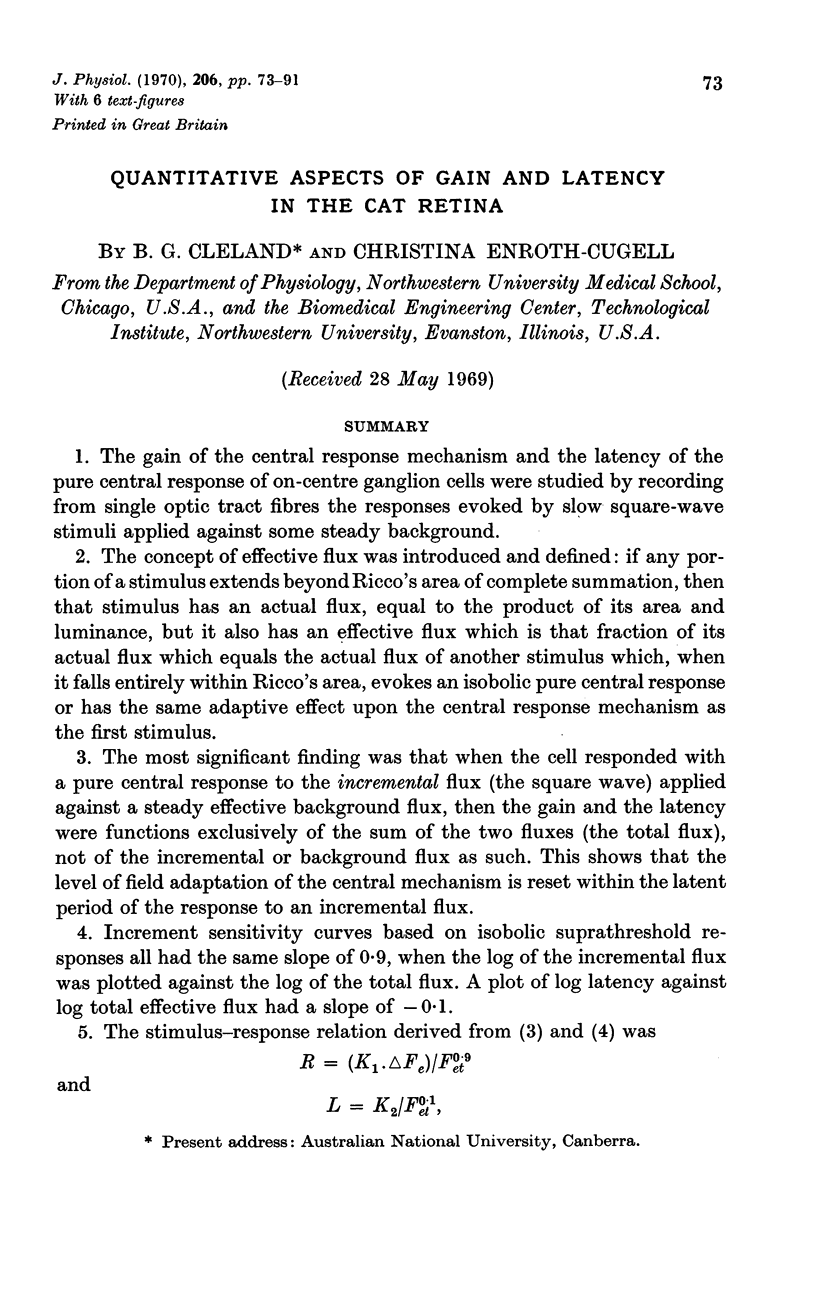
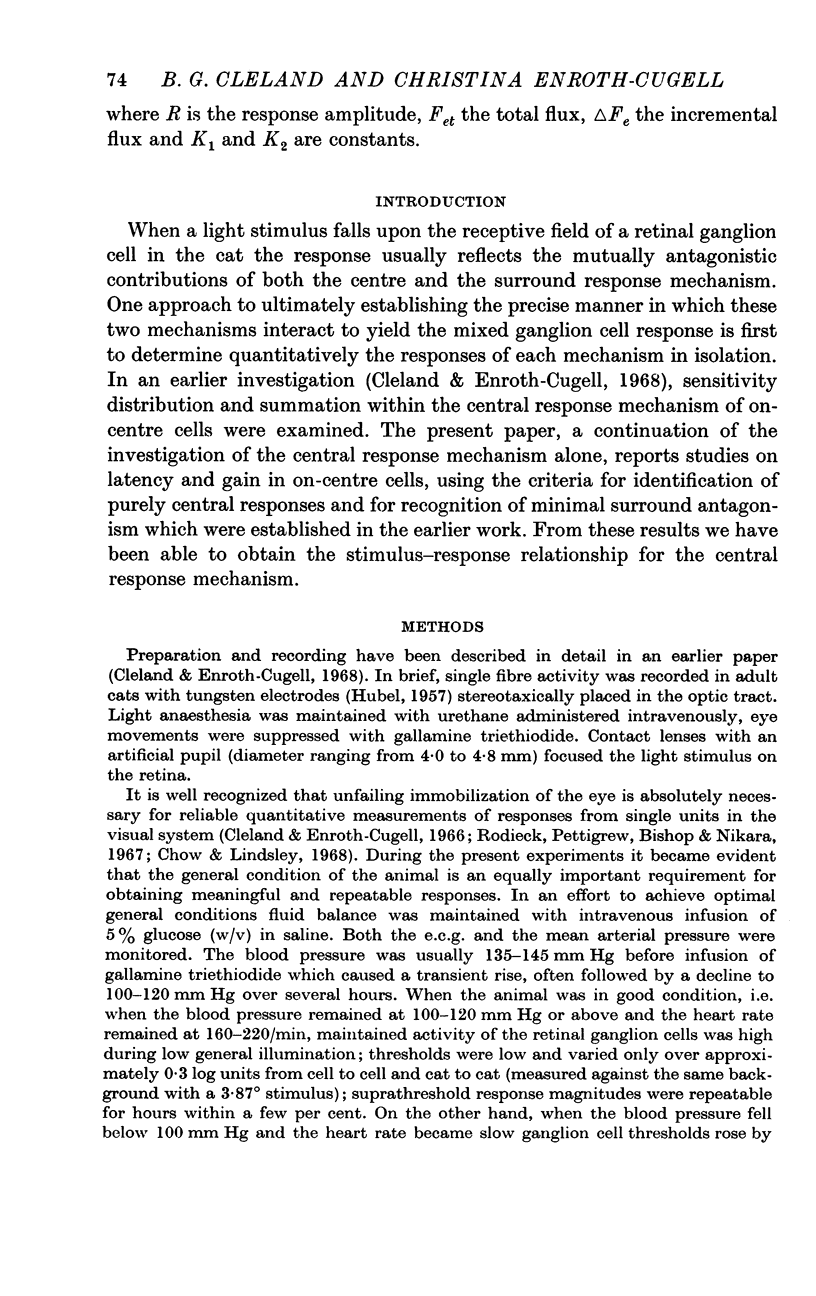
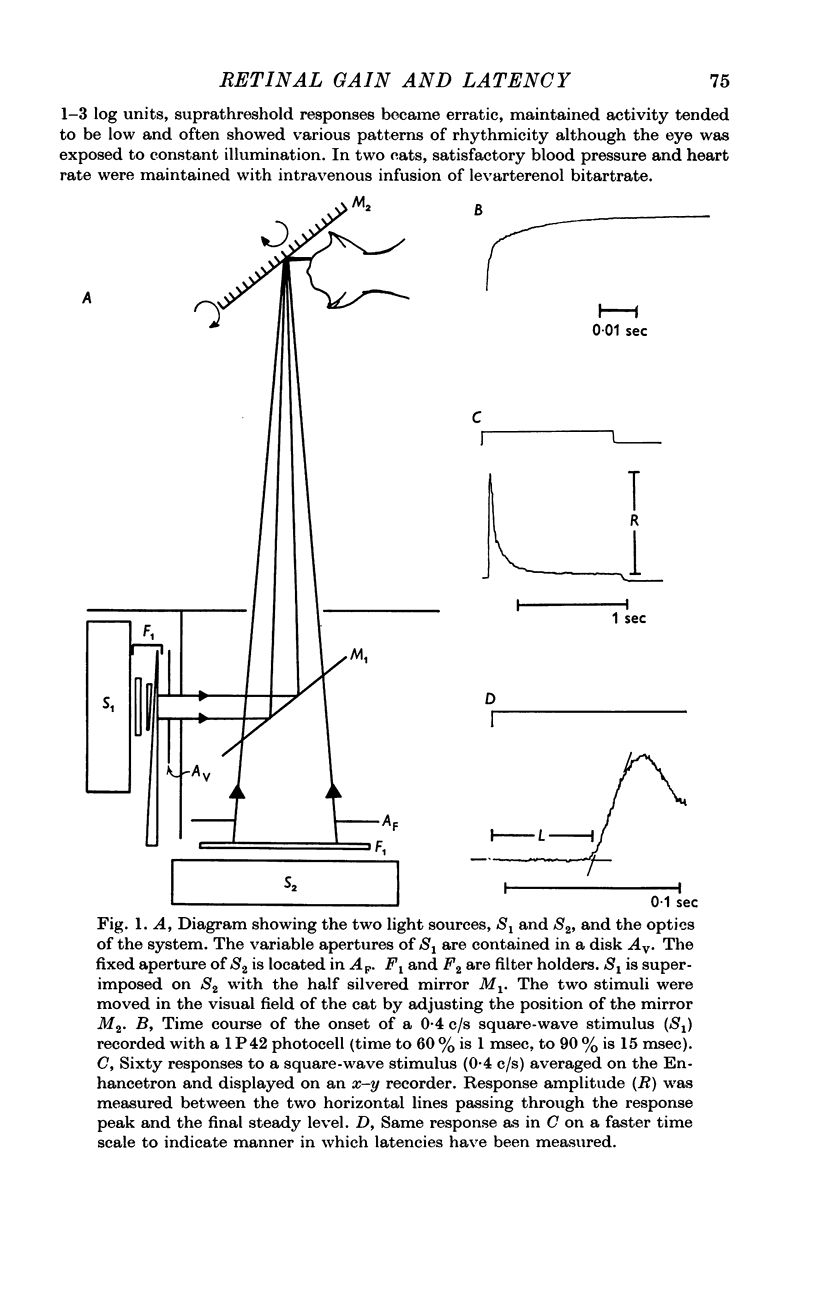
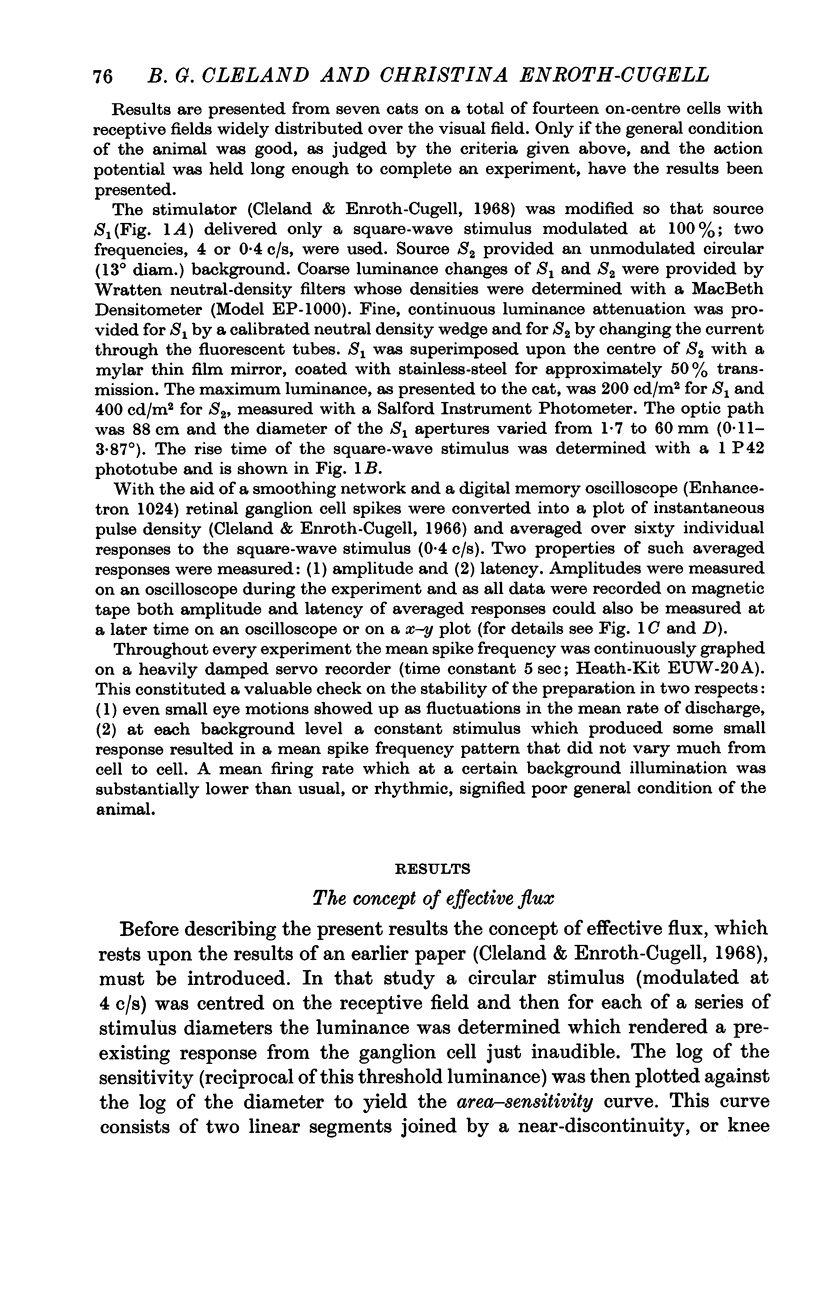
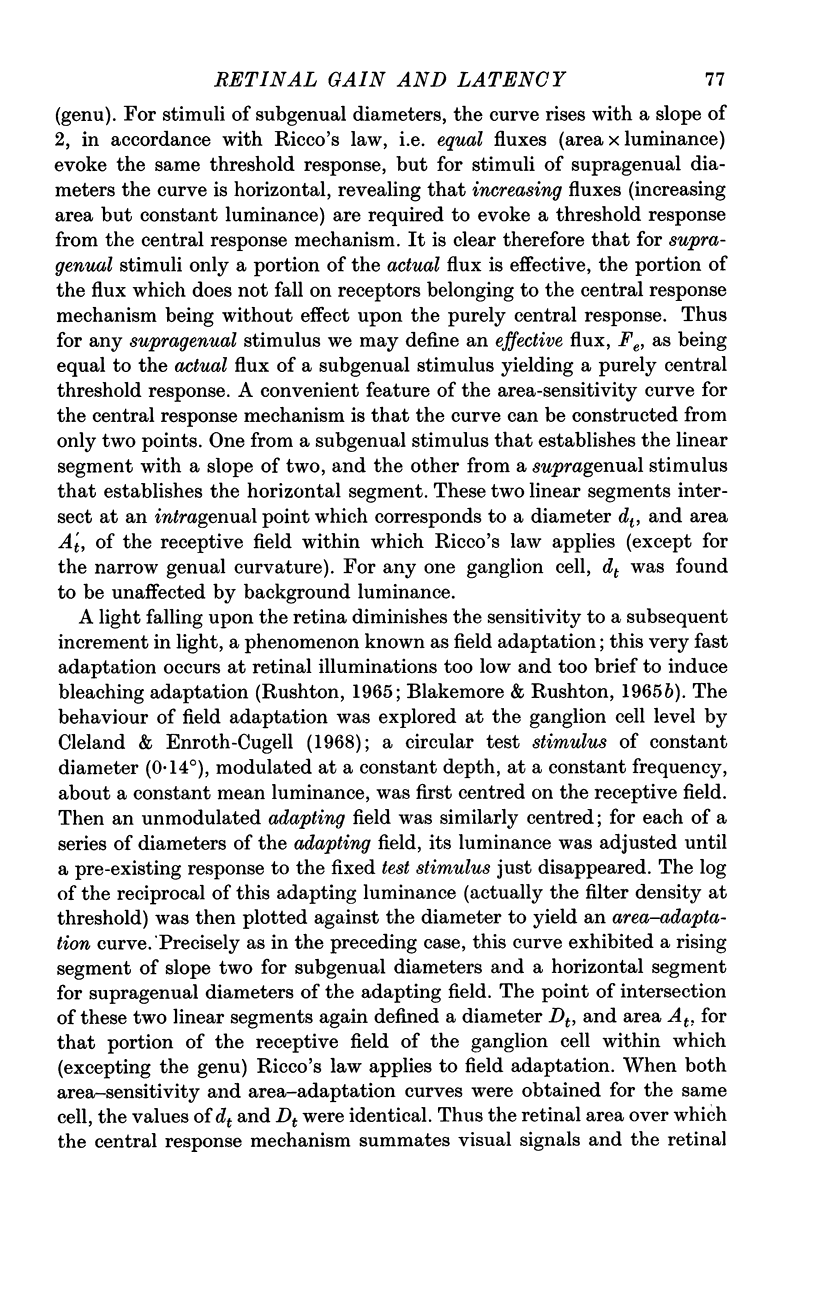
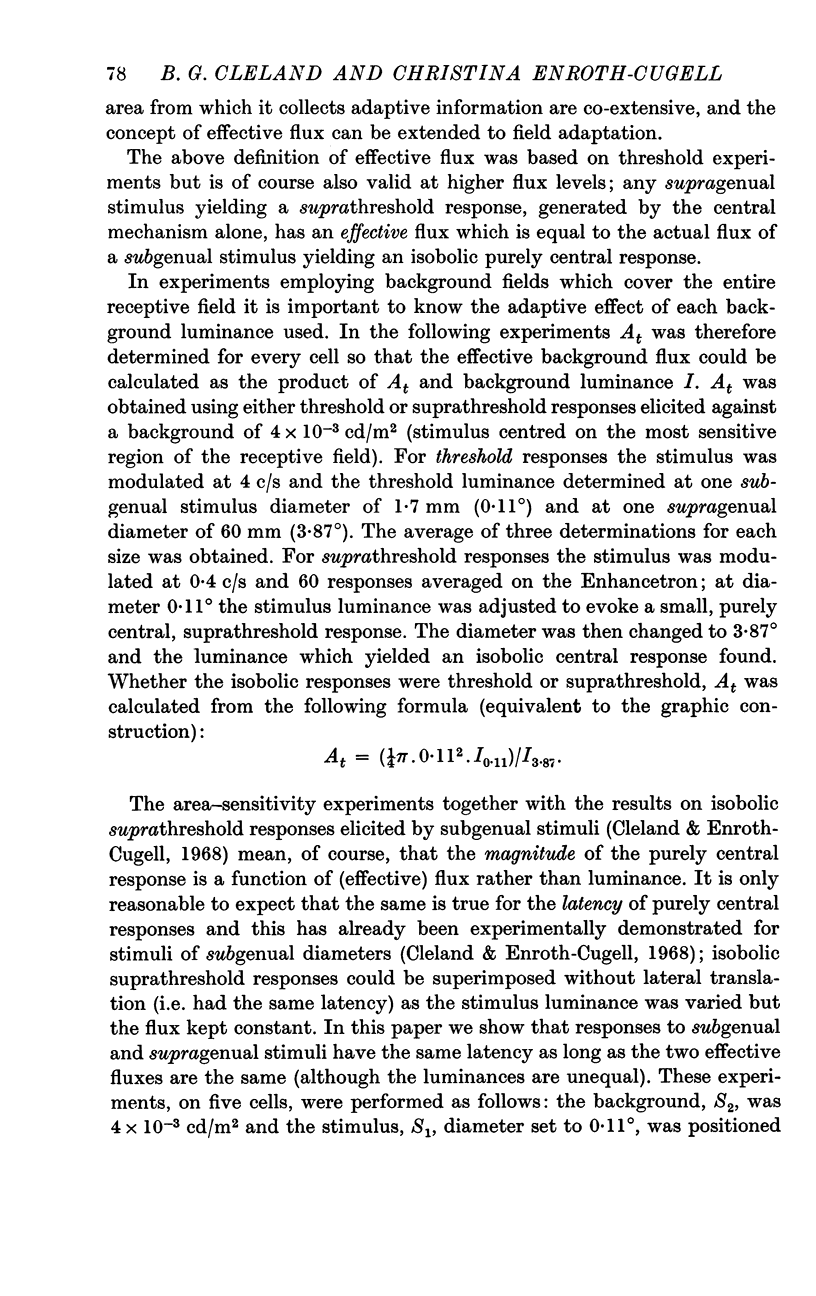
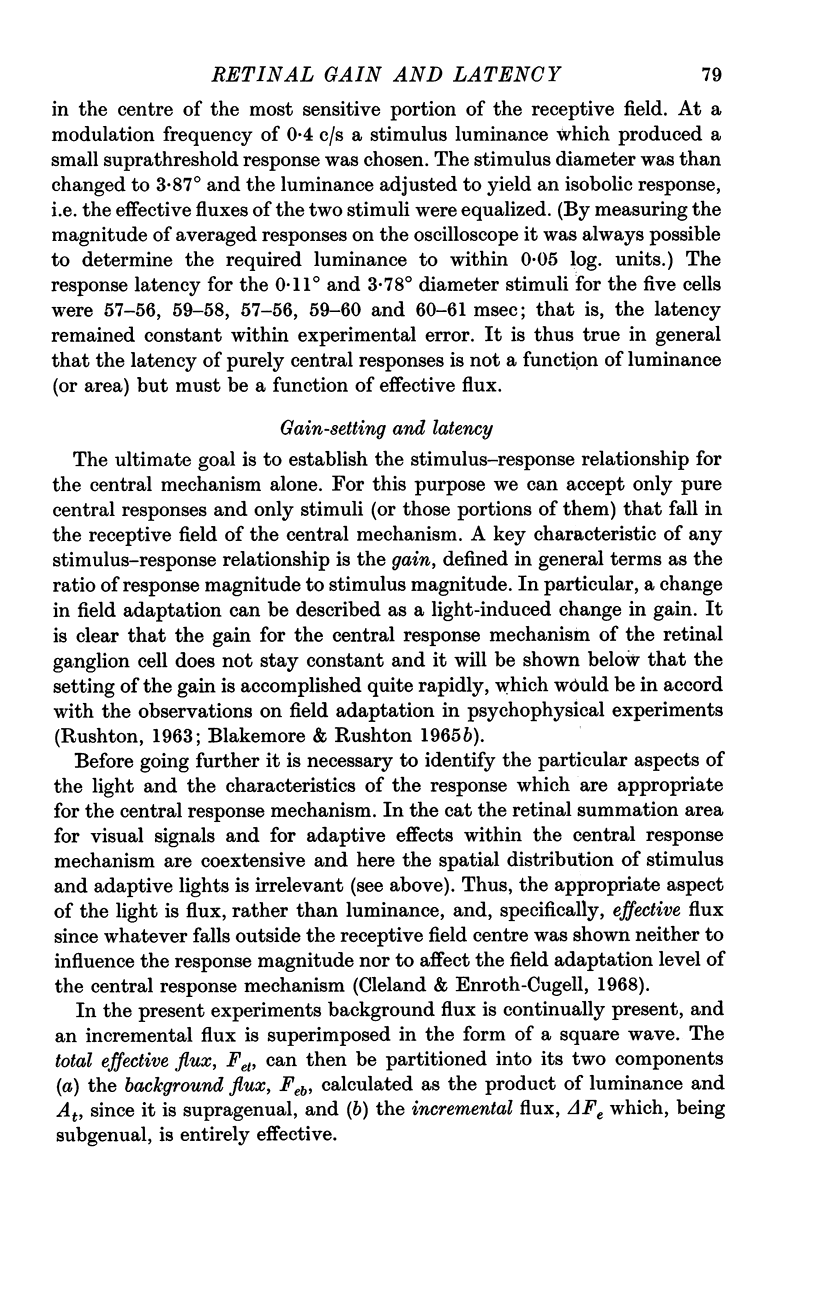
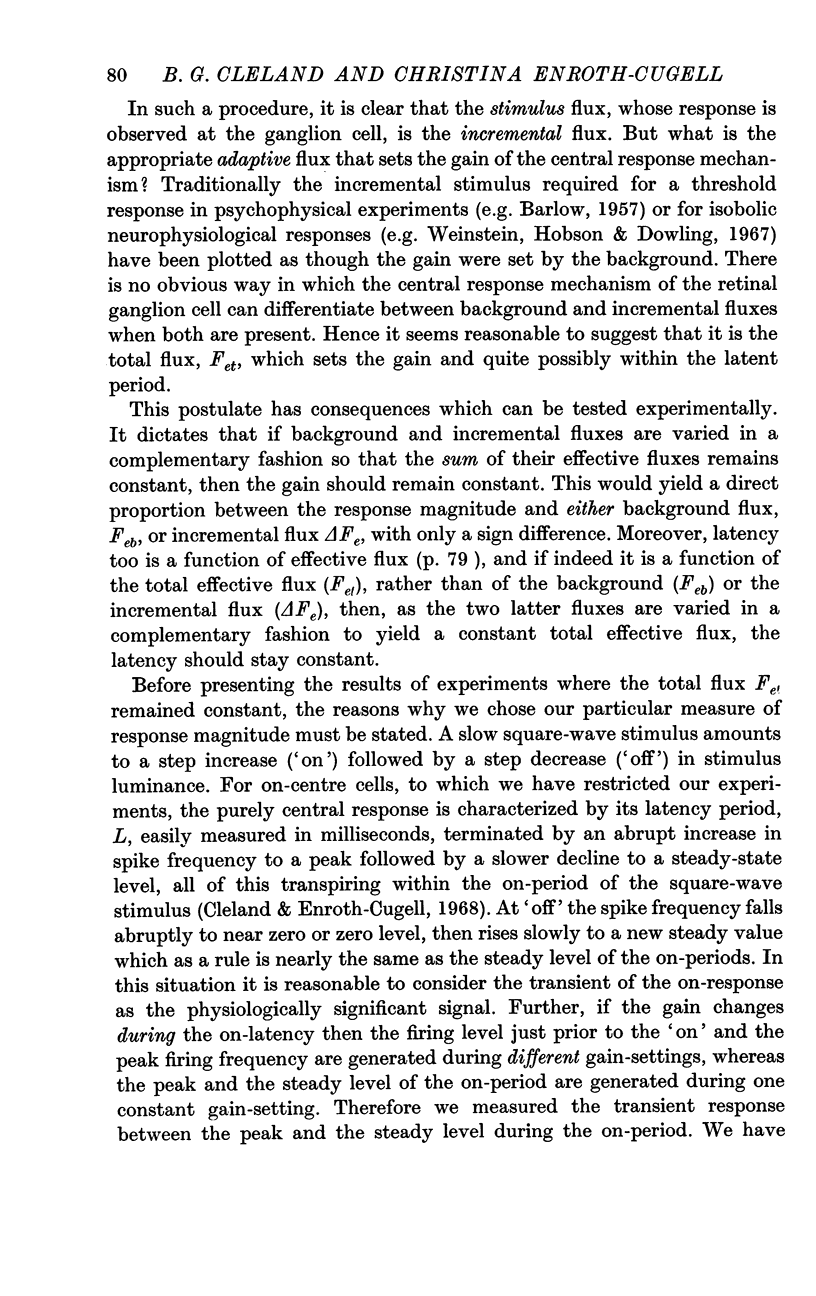
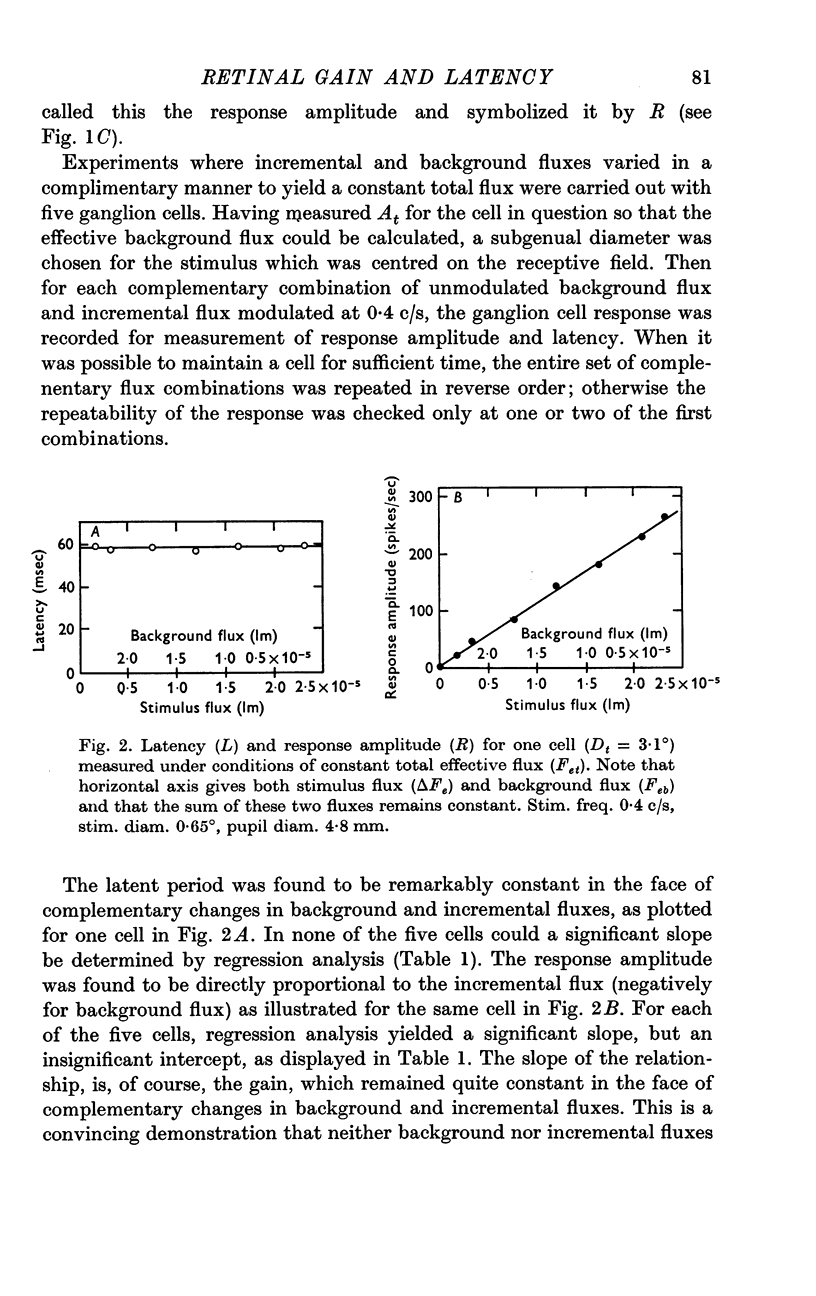
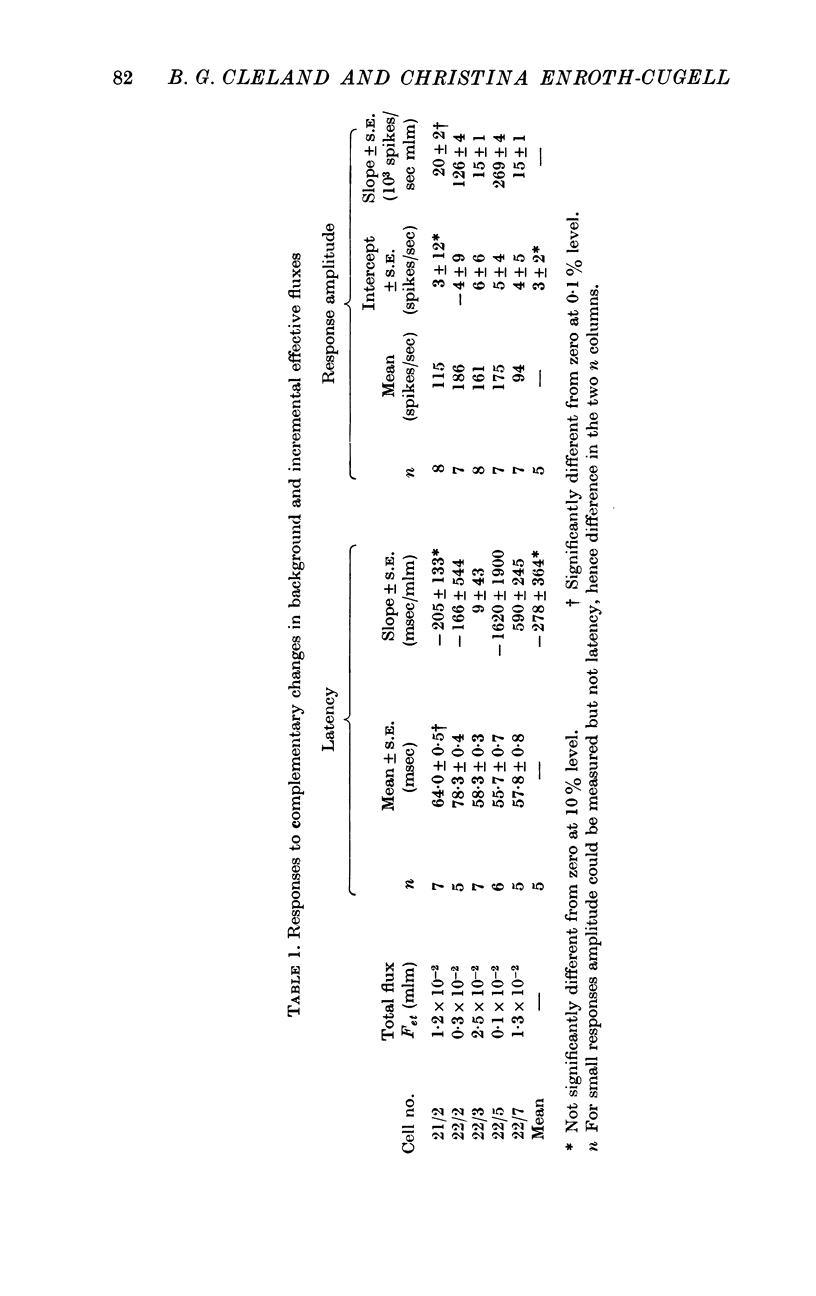
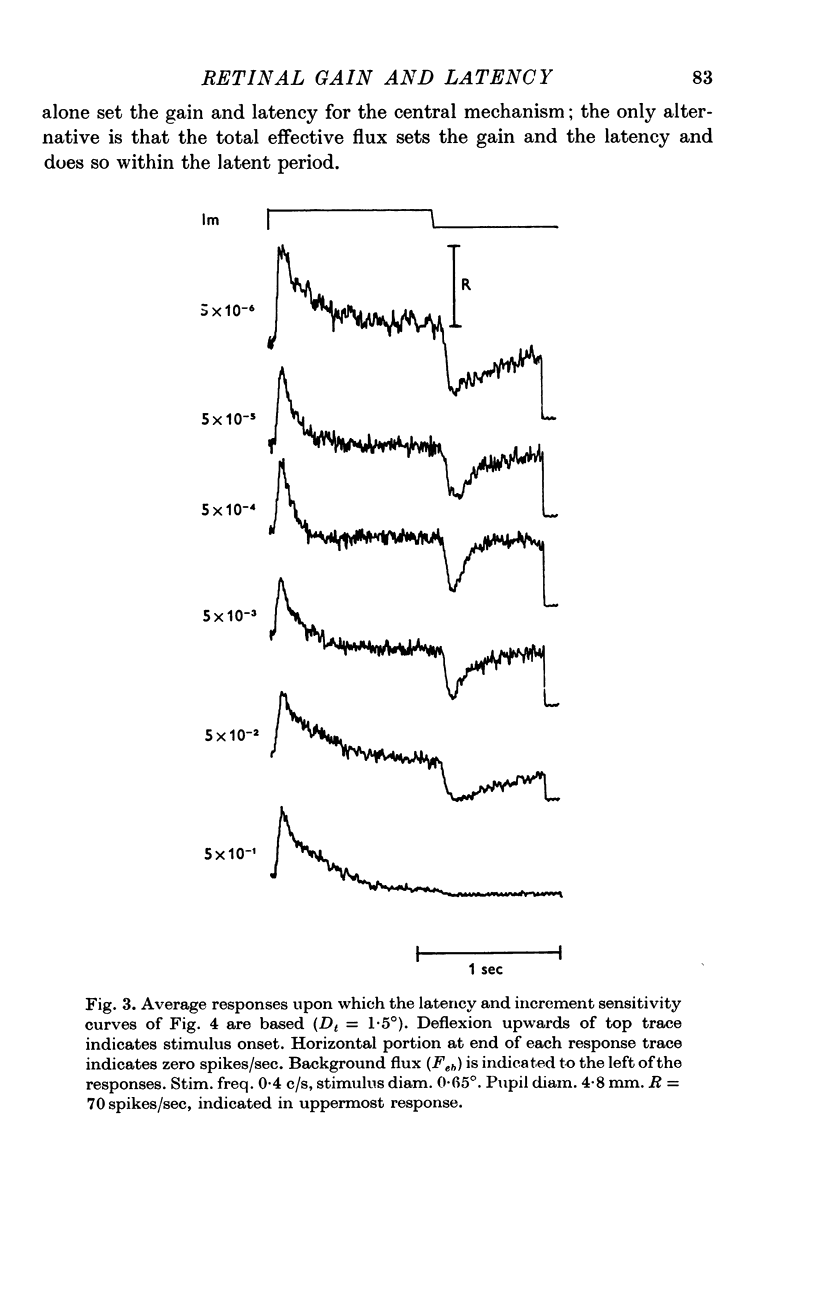
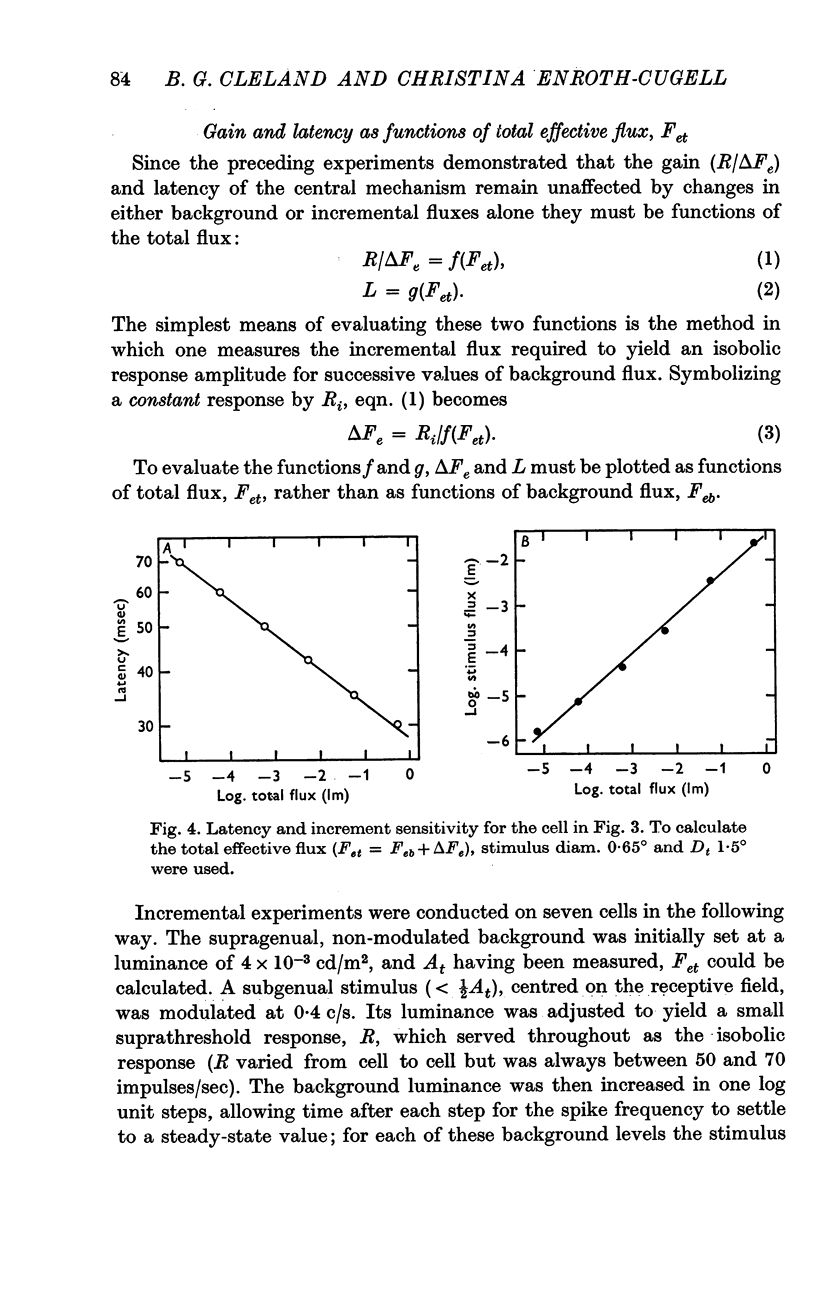
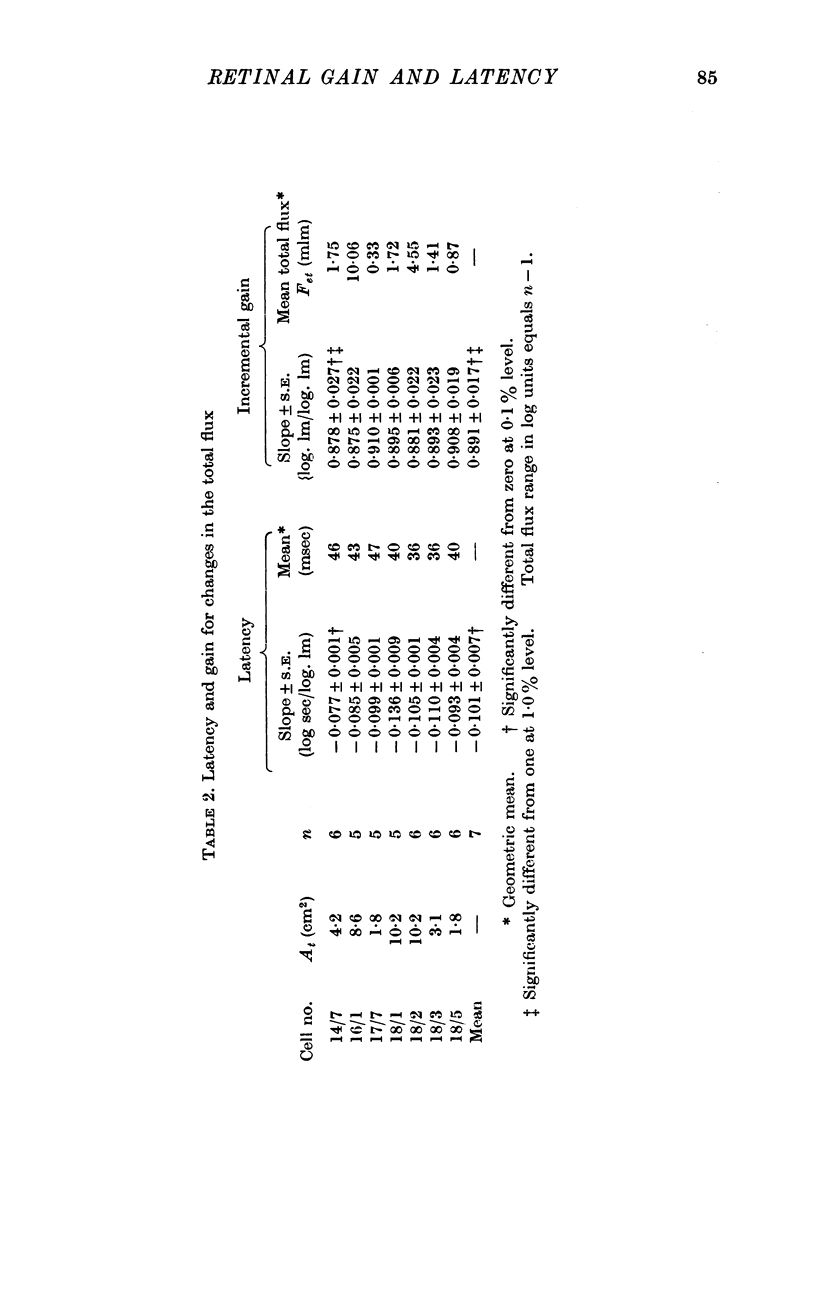
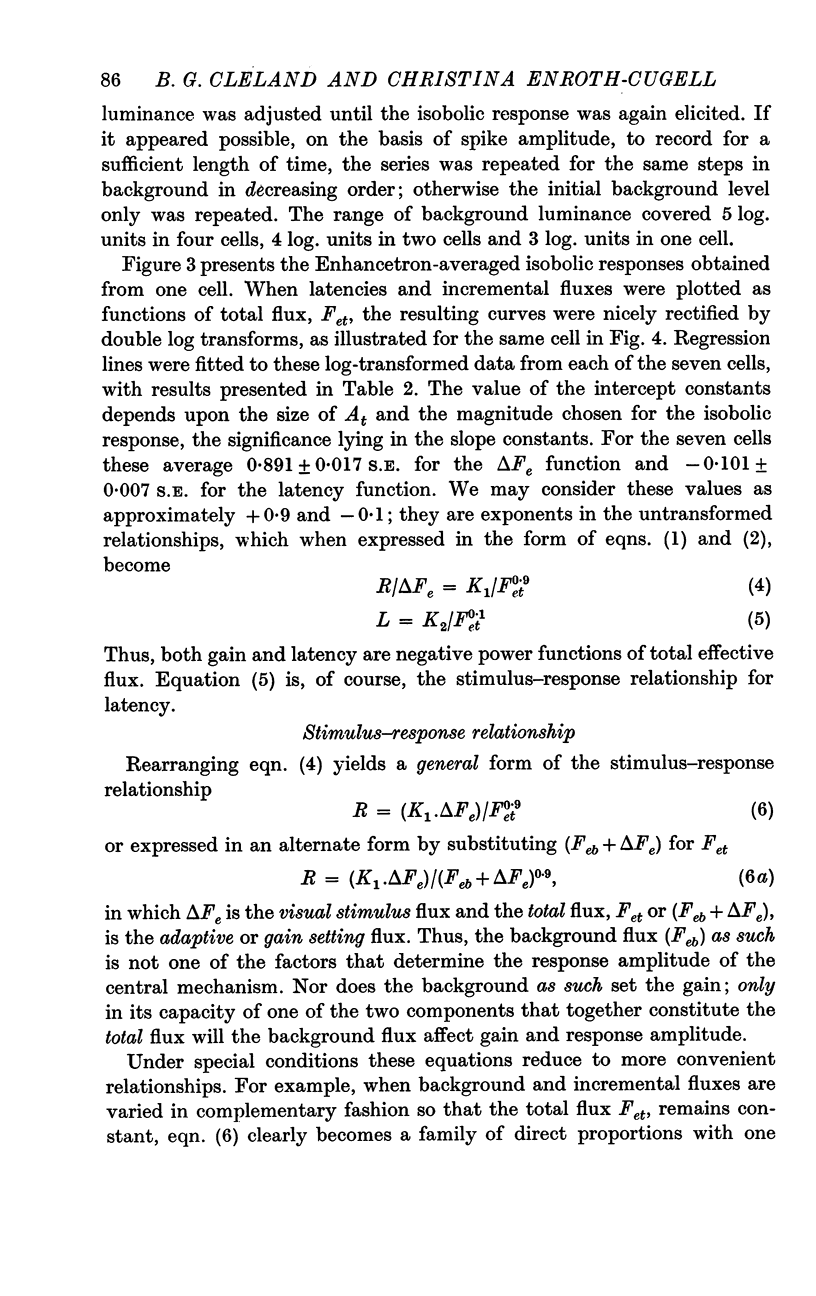
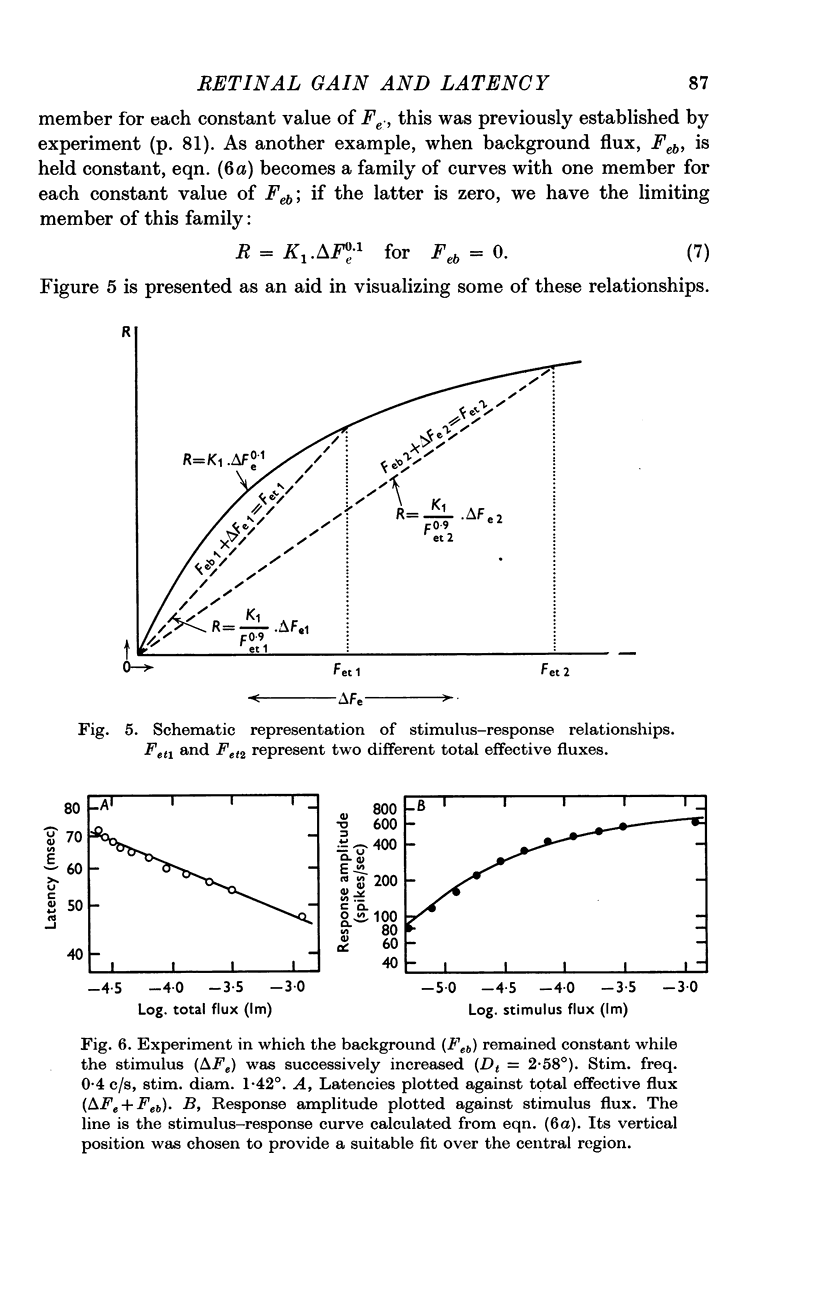
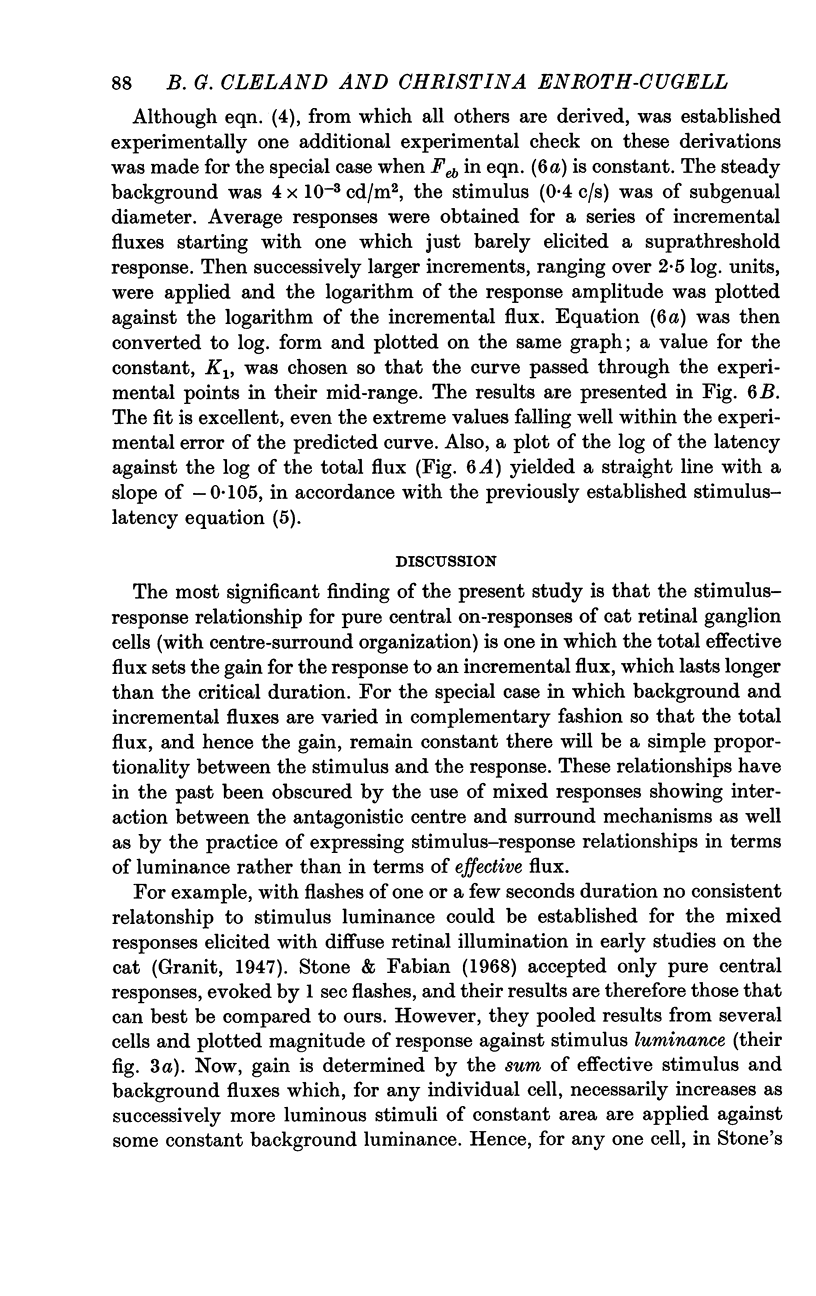
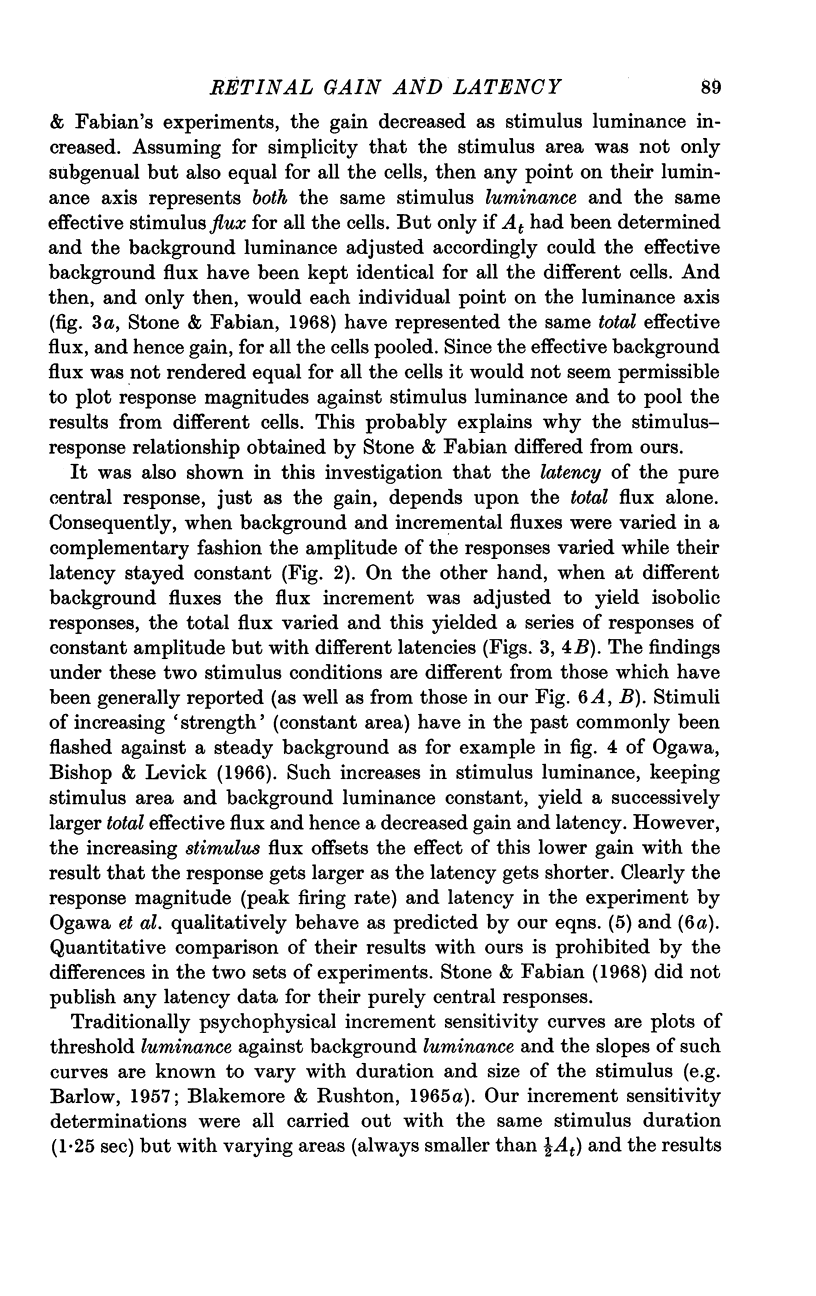
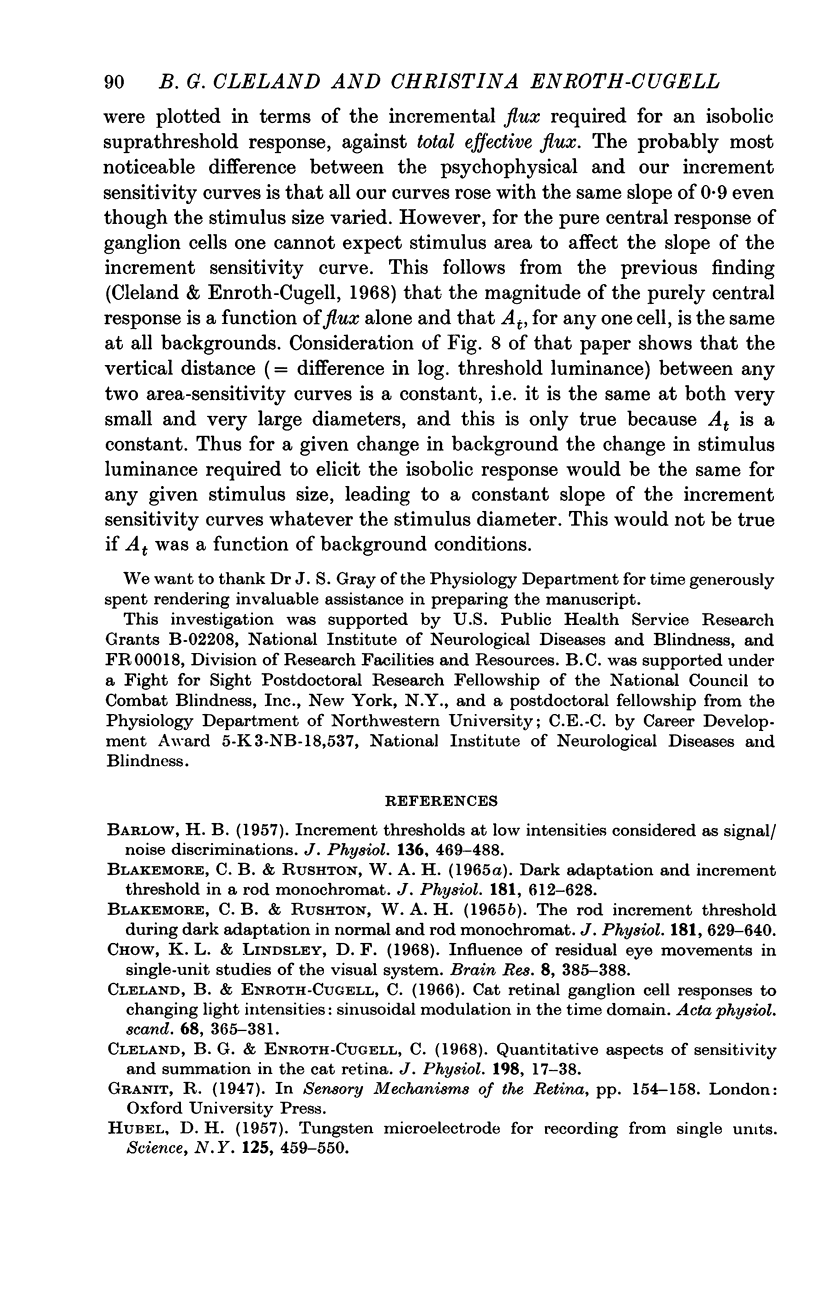
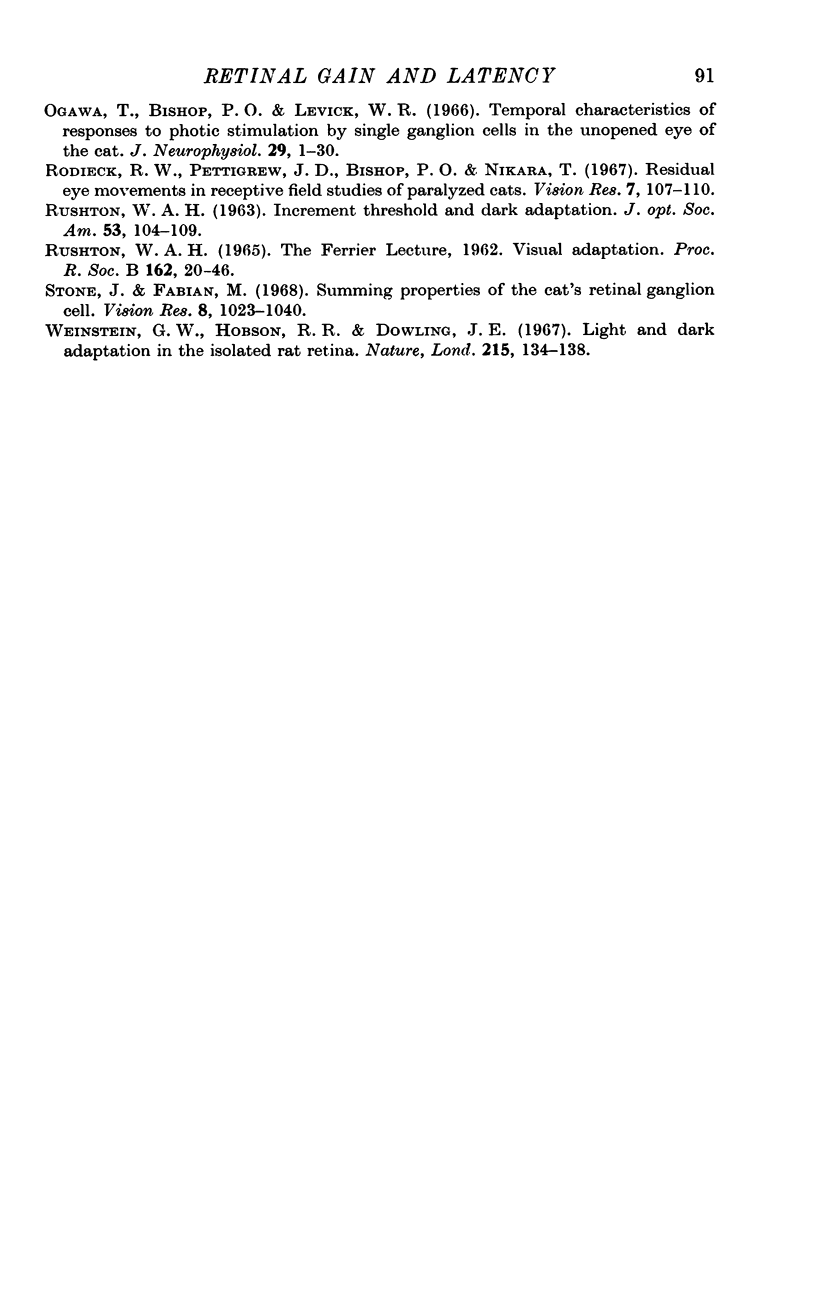
Selected References
These references are in PubMed. This may not be the complete list of references from this article.
- BARLOW H. B. Increment thresholds at low intensities considered as signal/noise discriminations. J Physiol. 1957 May 23;136(3):469–488. doi: 10.1113/jphysiol.1957.sp005774. [DOI] [PMC free article] [PubMed] [Google Scholar]
- Blakemore C. B., Rushton W. A. Dark adaptation and increment threshold in a rod monochromat. J Physiol. 1965 Dec;181(3):612–628. doi: 10.1113/jphysiol.1965.sp007786. [DOI] [PMC free article] [PubMed] [Google Scholar]
- Blakemore C. B., Rushton W. A. The rod increment threshold during dark adaptation in normal and rod monochromat. J Physiol. 1965 Dec;181(3):629–640. doi: 10.1113/jphysiol.1965.sp007787. [DOI] [PMC free article] [PubMed] [Google Scholar]
- Chow K. L., Lindsley D. F. Influences of residual eye movements in single-unit studies of the visual system. Brain Res. 1968 May;8(2):385–388. doi: 10.1016/0006-8993(68)90060-7. [DOI] [PubMed] [Google Scholar]
- Cleland B. G., Enroth-cugell C. Quantitative aspects of sensitivity and summation in the cat retina. J Physiol. 1968 Sep;198(1):17–38. doi: 10.1113/jphysiol.1968.sp008591. [DOI] [PMC free article] [PubMed] [Google Scholar]
- Hubel D. H. Tungsten Microelectrode for Recording from Single Units. Science. 1957 Mar 22;125(3247):549–550. doi: 10.1126/science.125.3247.549. [DOI] [PubMed] [Google Scholar]
- Ogawa T., Bishop P. O., Levick W. R. Temporal characteristics of responses to photic stimulation by single ganglion cells in the unopened eye of the cat. J Neurophysiol. 1966 Jan;29(1):1–30. doi: 10.1152/jn.1966.29.1.1. [DOI] [PubMed] [Google Scholar]
- RUSHTON W. A. Increment threshold and dark adaptation. J Opt Soc Am. 1963 Jan;53:104–109. doi: 10.1364/josa.53.000104. [DOI] [PubMed] [Google Scholar]
- RUSHTON W. A. VISUAL ADAPTATION. Proc R Soc Lond B Biol Sci. 1965 Mar 16;162:20–46. doi: 10.1098/rspb.1965.0024. [DOI] [PubMed] [Google Scholar]
- Rodieck R. W., Pettigrew J. D., Bishop P. O., Nikara T. Residual eye movements in receptive-field studies of paralyzed cats. Vision Res. 1967 Jan;7(1):107–110. doi: 10.1016/0042-6989(67)90031-4. [DOI] [PubMed] [Google Scholar]
- Stone J., Fabian M. Summing properties of the cat's retinal ganglion cell. Vision Res. 1968 Aug;8(8):1023–1040. doi: 10.1016/0042-6989(68)90075-8. [DOI] [PubMed] [Google Scholar]
- Weinstein G. W., Hobson R. R., Dowling J. E. Light and dark adaptation in the isolated rat retina. Nature. 1967 Jul 8;215(5097):134–138. doi: 10.1038/215134a0. [DOI] [PubMed] [Google Scholar]


